The Geoponica (also spelled Geoponika, Greek: Γεωπονικά) is a twenty-book collection of agricultural lore, compiled during the 10th century in Constantinople for the Byzantine emperor Constantine VII Porphyrogenitus.
The Greek word Geoponica signifies "agricultural pursuits"
The 10th century collection is sometimes (wrongly) ascribed to the 7th century author Cassianus Bassus, whose collection, also titled Geoponica, was integrated into the extant work.
Bassus drew heavily on the work of another agricultural compiler, Vindonius Anatolius (4th century).
The ultimate sources of the Geoponica include Pliny, various lost Hellenistic and Roman-period Greek agriculture and veterinary authors, the Carthaginian agronomist Mago, and even works passing under the name of the Persian prophet Zoroaster.
The Geoponica embraces all manner of "agricultural" information, including celestial and terrestrial omina, viticulture, oleoculture, apiculture, veterinary medicine, the construction of fish ponds and much more.
Geopónica o Extractos de agricultura de Casiano Baso;
traducción y comentarios de María José Meana, José Ignacio Cubero, Pedro Sáez;
Instituto Nacional de Investigación y Tecnología Agraria y Alimentaria 1998
Geoponica (XX, 46, 1 e seguintes) – séc. IX, bizantino.
Pôr num recipiente as vísceras de peixes e peixes pequenos com sal e deixar ao sol mexendo frequentemente. Terminada a maceração por efeito do calor, retira-se o garum introduzindo um cesto. O garumescorre para dentro do cesto e é filtrado através dele, podendo-se recolher o chamado liquamen. A parte sólida que fica é o alex. Alguns misturam duas medidas de vinho velho por cada medida de peixe.
Se se precisar de usar o garum sem o ter tanto tempo ao sol , coze-se rapidamente pondo o peixe em água do mar concentrada de modo a que um ovo bóie (…). Mas a flor do garum obtém-se com as entranhas, o sangue e o suco dos atuns sobre os quais se deita sal e se deixa macerar durante dois meses.
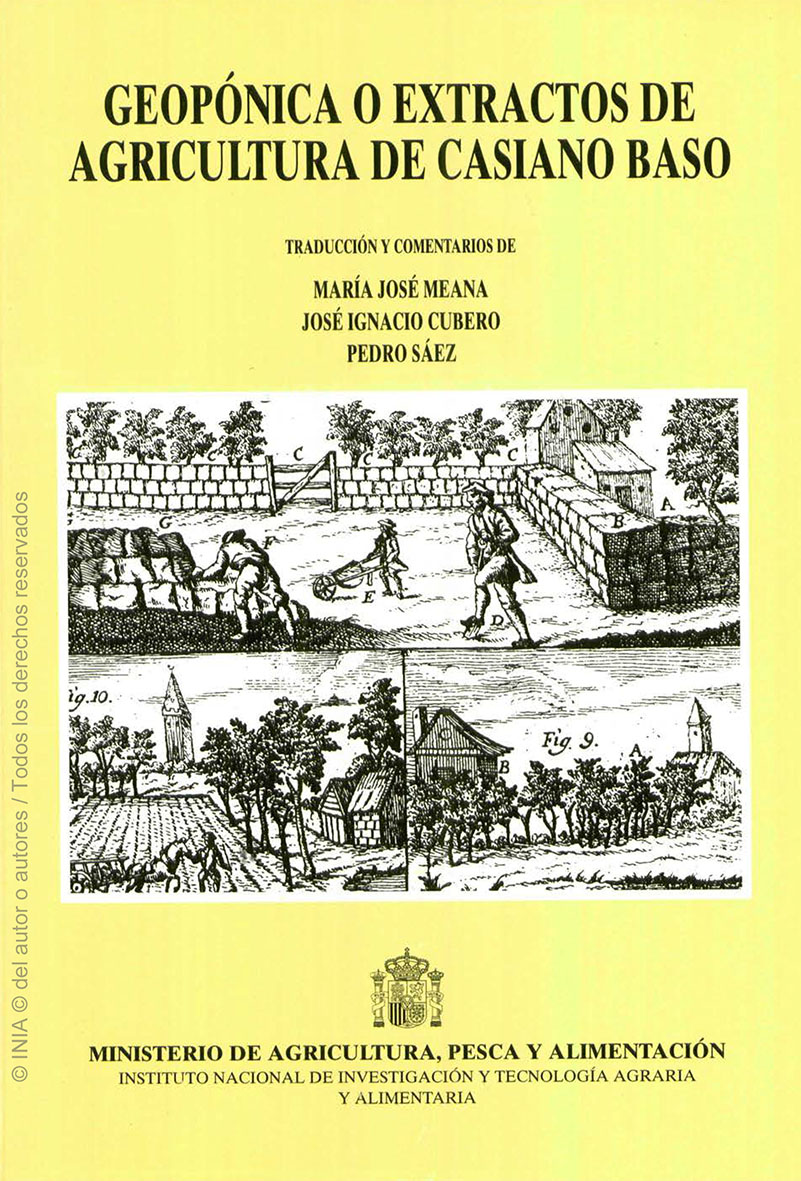
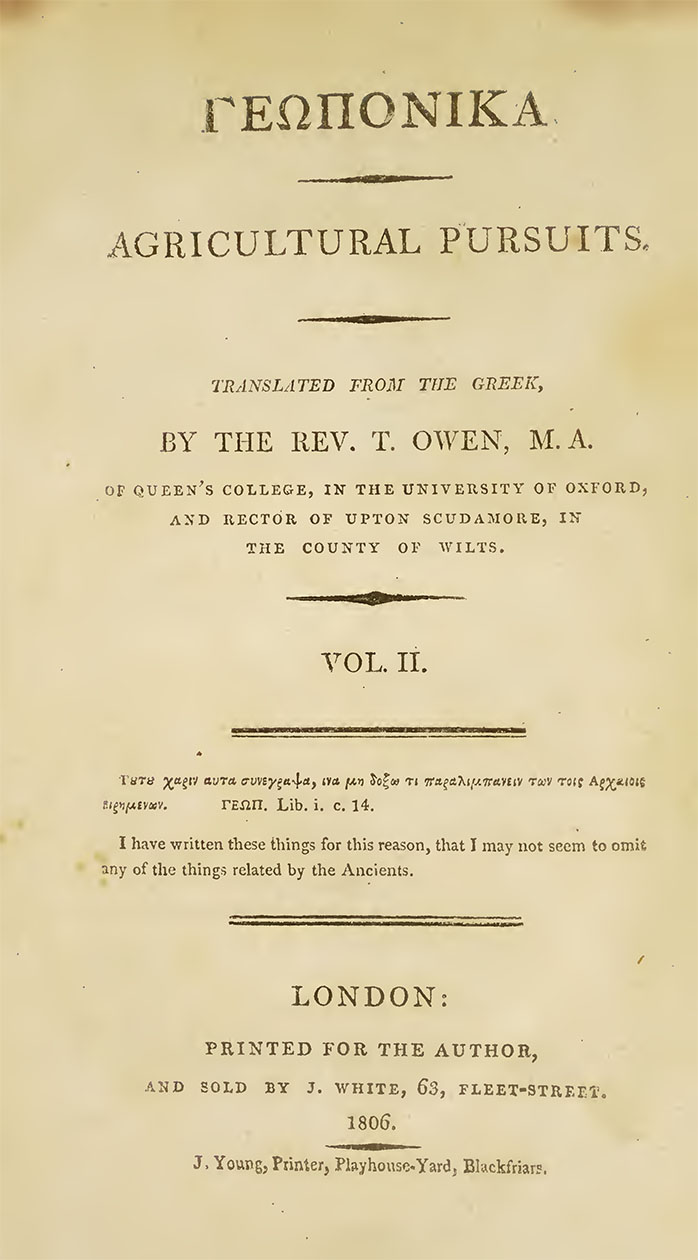
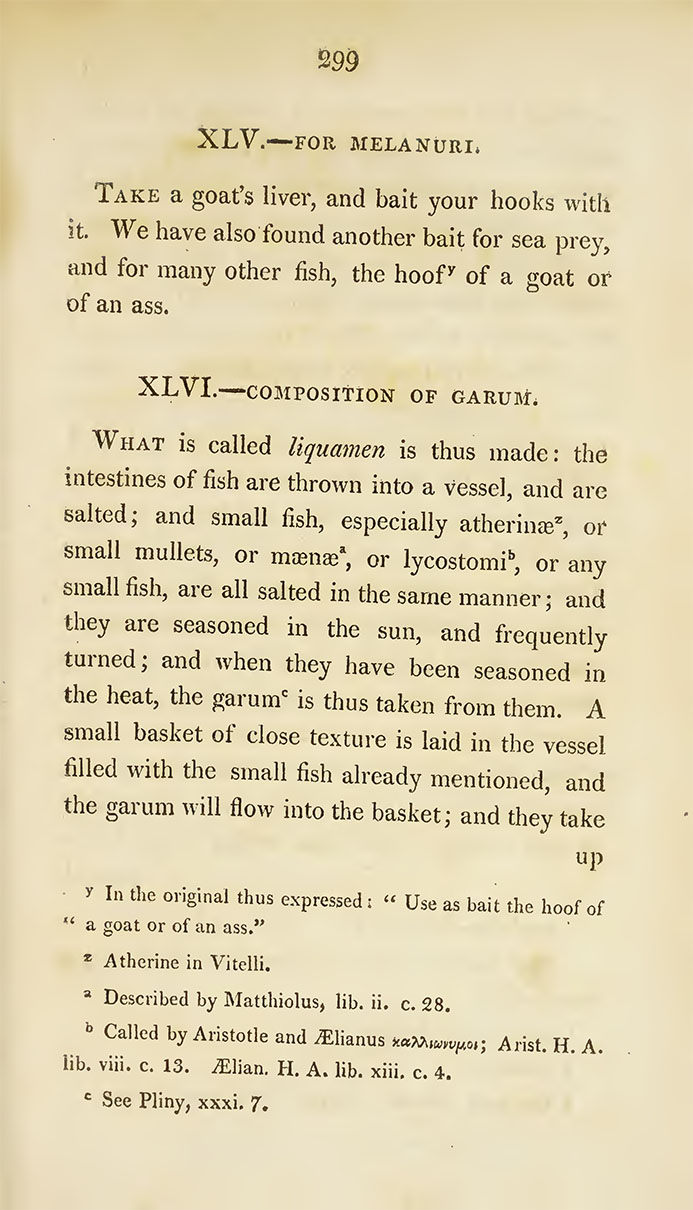
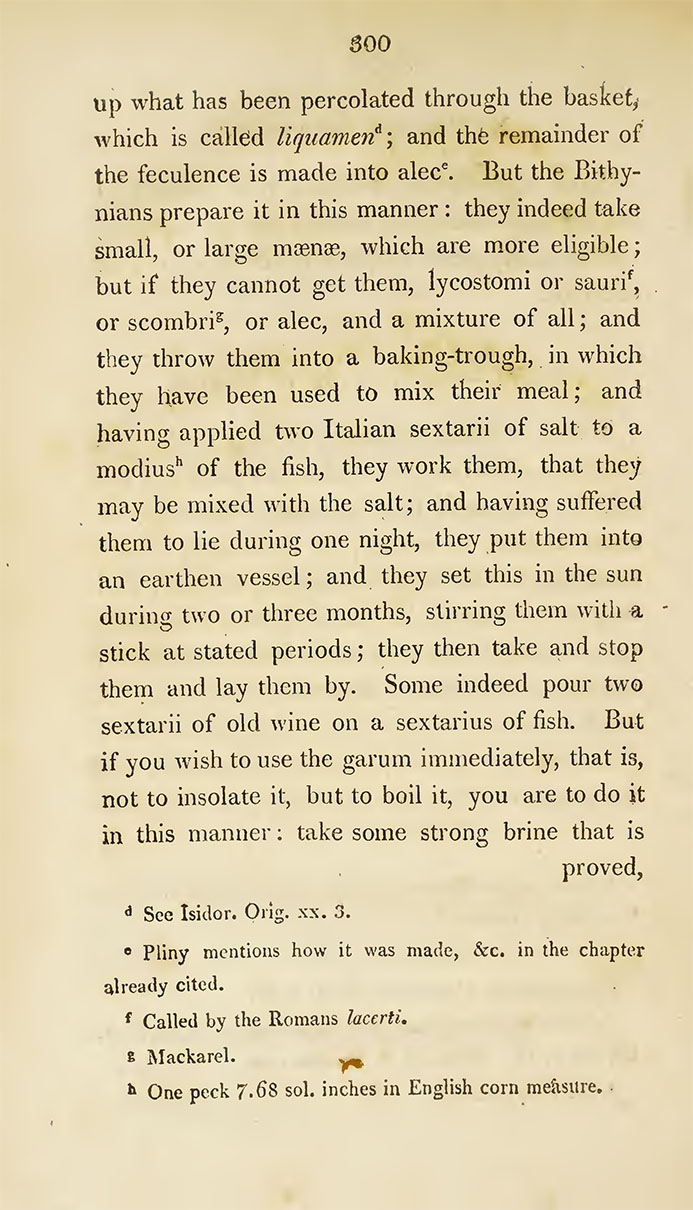
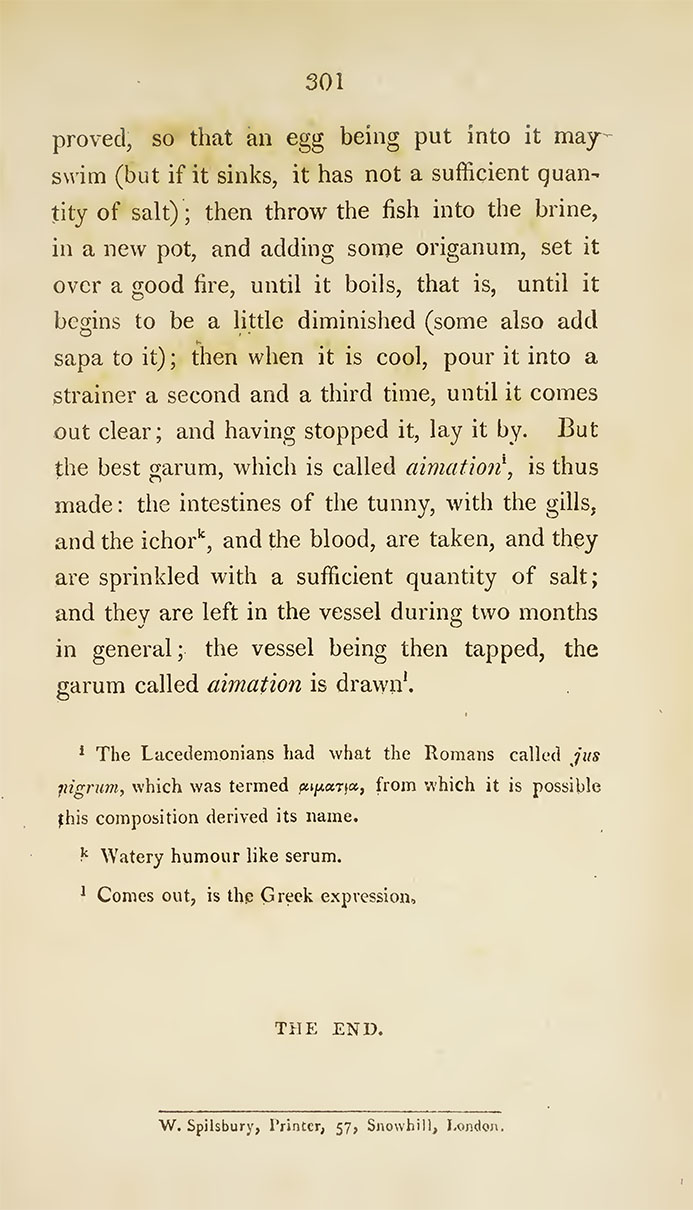
XLVI
Making gara
1. The so-called liquamen is made thus. Fish entrails are put in a container and salted
and little fish, especially sand-smelt or small red mullet or mendole or anchovy, or any small enough, are all similarly salted; and left to pickle in the sun, stirring frequently.
2. When the heat has pickled them, the garos is got from them thus: a deep close-woven basket is inserted into the centre of the vessel containing these fish, and the garos flows into the basket. This, then, is how the liquamen is obtained by filtering through the basket; the residue makes alix.
3. The Bithynians make it thus. Take preferably small or large mendole, or, if none, anchovy or scad or mackerel, or also alix, and a mixture of all these, and put them into a baker’s bowl of the kind in which dough is kneaded; to one modios of fish knead in 6 Italian pints pints of salt so that it is well mixed with the fish, and leaving it overnight put it in an earthenware vessel and leave it uncovered in the sun for 2 or 3 months, occasionally stirring with a stick, then take [the fluid?], cover and store.
4. Some add 2 pints of old wine to each pint of fish.
5. If you want to use the garon at once, that is, not by ageing in the sun but by cooking, make it thus. Into pure brine, which you have tested by floating an egg in it (if it sinks, the brine is not salty enough) in a new bowl, put the fish; add oregano; place over a sufficient fire, until it boils, that is, until it begins to reduce a little. Some also add grape syrup. Then cool and filter it; filter a second and a third time until it runs clear; cover and store.
6A rather high quality garos, called haimation, is made thus. Take tunny entrails with the gills, fluid and blood, sprinkle with sufficient salt, leave in a vessel for two months at the most; then pierce the jar, and the garos called haimation flows out.
23. Garum was a fish sauce resulting from the maceration of certain fish in the presence of an antiseptic, in this case salt. It was a condiment much appreciated in ancient times.
read more
P. Grimal e Th. Monod, “Sur la véritable nature du Garumm” REA, 54 (1952), pp. 27-38; J. Andre, L´alimentation … pp.195-198;
R. Curtis, Garum e Salsamenta. Produção e Comércio em Matéria Médica. Leiden, 1991.
For Hispanic garum, one of the most famous:
M. Ponsich e M. Tarradell, Garum et Industries antiques de la salaison dans la Mediterranee occidentale. Paris, 1965
and
M. Ponsich, Azeite e peixe salgado. Fatores geoeconômicos de Bética e Tingitânia. Madrid, 1988.
24. Liquamen appears mentioned for the first time in the middle of the century. I A.D. (Col. 6,2,7) although the same word is also used to refer to liquids. It is the most Roman fish sauce, which is the most used term to designate these sauces, although this does not mean that the term garum has disappeared. It seems that the only difference is in the use, in the production process, of different fish, usually smaller ones. In this text, the liquamend manufacturing process seems to differ from garum, being the second product of the first.
R. Curtis, cit. pp. 7 e 135. 25 · Allec is a fish sauce that the Romans made. It was the paste, or sediment, that was left at the bottom of the container or barrel that other fish sauces such as garum, liquamen or muria were made in.
Ver R. Curtis, cit. pp. 7-8 e 14. 26 ·
R. Curtis, cit pp. 135 173. CURTlS, R. Garum e Salsamenta. Produção e Comércio em Matéria Médica. Leiden, I 991.
*Sextário A Roman measure of capacity, one sixth of a congius, about 546 ml or approximately one pint.
Customer Care
CAN THE CAN uses cookies in order to provide you with a better online experience. By continuing your visit to our site you agree to the use of cookies
Contact
reservations@canthecan.net
info@canthecan.net
T. +351 914 007 100
T. +351 218 851 392
Terreiro do Paço 82/83
1100-148 Lisboa – Portugal
Open everyday from 9:00 AM to 1:00 AM